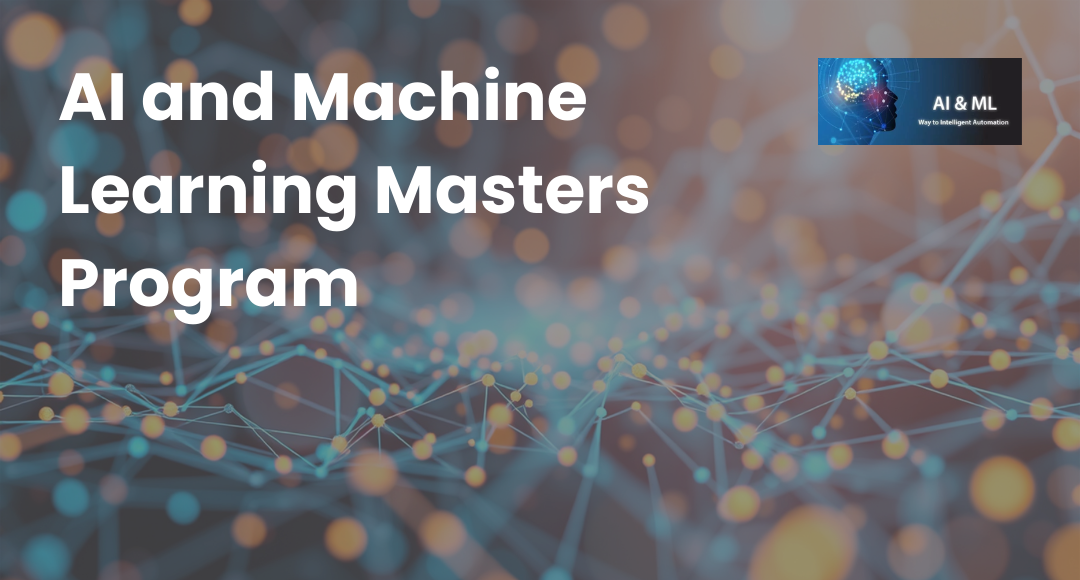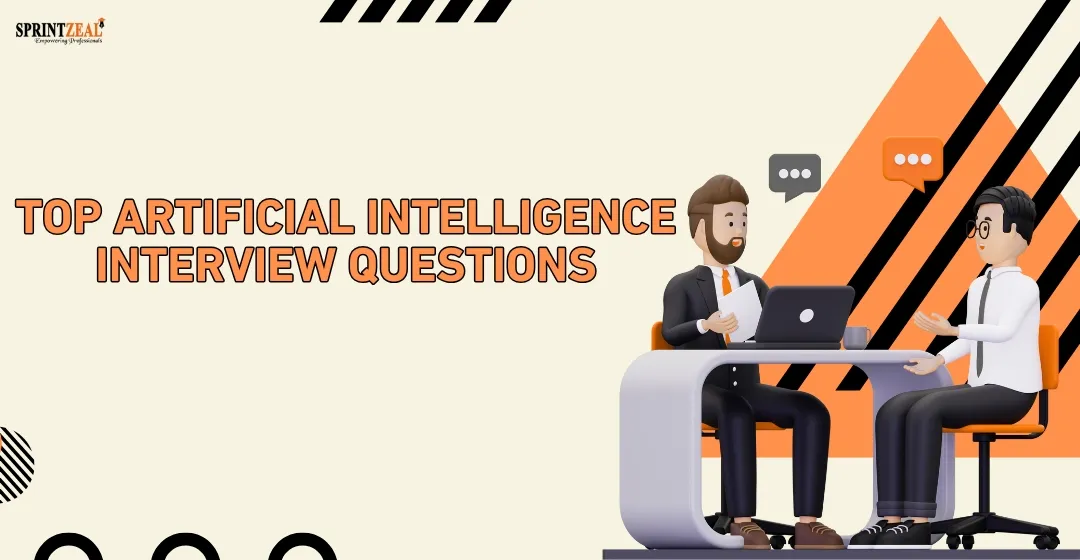Classification in Machine Learning Explained
-
 By Arthi
By Arthi - Published on Apr 19 2023

Table of Contents
Introduction to Machine Learning and Classification
Machine learning is the concept of computer programming that can learn and adapt to new data without human interruption. It is an application of Artificial Intelligence (AI) that provides a system to automatically learn and update with a good, understandable program.
Classification is defined as admitting, understanding, and grouping objects. It classifies the datasets into pre-set classes. It is perhaps performed on both structured and unstructured data. The process starts with anticipating the class of given points. In classification machine learning, algorithms work to classify the data and datasets into respective and relevant categories.
Classification Models in Machine Learning
Dataset classification is necessary to keep business data. It helps secure confidential information and identifies relevant datasets that are accessible to everyone who needs help. Classification and prediction are two forms. It analyses datasets and is used as important data for models describing classes to predict future trends.
One example of Machine Learning classification is "deducting spam mails". It is a data mining (machine learning) technique used to predict group membership for dataset classifications. It is easy to modify and improve the quality of the datasets by using an algorithm.
It is the big advantage of supervised learning when it works under common classification. Machine learning algorithms work in most applications like medicine, email filtering, speech recognition, and computer vision. It uses a confidential algorithm based on task performance.

The classifier acquires the trained datasets to build the classification rules. It comes out under the supervised learning technique. Once it gets tested by the classifier, the unknown attributes are listed out. There are two categories of classification in machine learning:
supervised and unsupervised classification.
1) Supervised – the work done under human guidance.
2) Unsupervised – the work calculated by the software.
Types of Classification in Machine Learning
There are seven types of classification in machine learning and all seven models are called deep learning classification models.
- Logistic Regression
- Naïve Bayes
- Stochastic Gradient Descent
- K-Nearest Neighbors
- Decision Tree
- Random Forest
- Support vector Machine
Logistic Regression
Logistic regression is a Machine Learning algorithm for classification. In this algorithmic classification, using logistic functions, the possible outcome of a single trial is modelled. The advantage of this logistic regression is that receive multiple variables and gives a single output variable. It works when a binary classification machine learning variable is present. This is the disadvantage of logistic regression.
Naïve Bayes
Bayes is the theorem of algorithmic classification for every single feature. Classification and spam filtering work in many real-world documents. Getting the necessary parameters requires a small amount of training and works extremely fast compared to more experienced methods.
It is the advantage of naïve Bayes. It works only when there is a predictor variable. And this is the disadvantage of Naïve Bayes.
Stochastic Gradient Descent
In linear models of algorithm classification, stochastic gradient descent works very easily and efficiently, supporting the function and penalties. It is structured and simple to execute. This is the advantage of stochastic gradient descent. It is hard to scale. Hence, it requires hyper-parameters. This is the disadvantage of stochastic gradient descent.
K-Nearest Neighbors
Neighbour’s algorithm classification is known as lazy learning. It does not work in a general internal model but simply stores the training data. It has a simple majority vote for each point. Neighbor algorithm classification is easy to implement and contains a large number of training datasets.
This is the advantage of having neighbors. The K value is high and needs to be controlled. This is the disadvantage of the neighbor’s classification.
Decision Tree
The classes get the attribute of datasets to classify. The decision tree can handle both numerical and categorical datasets in algorithmic classification. It is easy to understand and visualize. This is the advantage of the decision tree. If it is not generalized well, it may create a decision-tree complex. This is the disadvantage of the decision tree algorithm classification.
Random Forest
For overfitting a model and controlling the Meta, the estimator takes the number of various decision trees to improve the classifier in a random forest. Overfitting and the random forest are better classifiers. It is the advantage of a random forest. It has a complement algorithm for classification and is difficult to implement. And this is the disadvantage of random forests.
Support vector Machine
Support vector machine takes the training data as points and spaces them out into categories by clearing the gap in this algorithm's classification. It is high-dimensional and memory-efficient. This is the advantage of a support vector machine. The algorithmic classification is not provided directly, and they are very expensive in five-fold cross-validation. And this is the disadvantage of a support vector machine.
How to Implement Classification in Machine Learning?
When it comes to implementation, the first step is to read the data. It works as a reference or sequence, depending on the data type. The features need to be created for dependent and independent based on the dataset.
To implement the algorithmic classification of the data, it should be split into training and testing sets. And it needs to use different algorithms like KNN (k-nearest neighbor), decision trees, and the SVM algorithm (support vector machine). The classifier uses the exact algorithm for classification in machine learning to implement.
Conclusion
In modern society, machine learning is becoming increasingly important. In the business world, social networking, and for personal use, it works wonderfully everywhere. Machine learning is the study of computer algorithms that use datasets to develop and learn. It belongs to AI (Artificial Intelligence).
Model-based example datasets are created by machine learning algorithms. Most applications, including those in health, email filtering, speech recognition, and computer vision, use machine learning techniques for classification. It makes use of a secret algorithm based on how well tasks are completed.
Sprintzeal is a globally recognized organization provides offering AI and Machine Learning Master Program. Send in an inquiry to get full details about the program.
Here are some articles you might be interested in
Subscribe to our Newsletters
Popular Programs
Trending Posts
What is Hyperautomation? Why is it important?
Last updated on May 9 2023
Explore Short AI: A Game-Changer for Video Creators - Review
Last updated on May 30 2025
Navigating Ethical AI: The Role of ISO/IEC 42001
Last updated on Jun 25 2024
Top Machine Learning Frameworks to Use
Last updated on Feb 28 2024
Top Artificial Intelligence Interview Questions for 2025
Last updated on Oct 15 2025
AI Engineer Salary in 2024 - US, Canada, India, and more
Last updated on Feb 29 2024
Categories
- Other 66
- Agile Management 58
- Cloud Computing 51
- Project Management 170
- Big Data 58
- Business Management 82
- Digital Marketing 73
- IT Service Management 29
- Programming Language 50
- AI and Machine Learning 68
- IT Security 110
- Quality Management 77
- IT Hardware and Networking 25
- Microsoft Program 4
- Workplace Skill Building 12
- Risk Management 9
- Information Security 8
- Leadership and Management 7
- Corporate Training and Development 1
Trending Now
How Artificial Intelligence Has Made Understanding Consumer Buying Behavior Easy in 2025
Article7 Amazing Facts About Artificial Intelligence
ebookMachine Learning Interview Questions and Answers 2024
ArticleHow to Become a Machine Learning Engineer
ArticleData Mining Vs. Machine Learning – Understanding Key Differences
ArticleMachine Learning Algorithms - Know the Essentials
ArticleMachine Learning Regularization - An Overview
ArticleMachine Learning Regression Analysis Explained
ArticleDeep Learning Applications and Neural Networks
ArticleDeep Learning vs Machine Learning - Differences Explained
ArticleDeep Learning Interview Questions - Best of 2024
ArticleFuture of Artificial Intelligence in Various Industries
ArticleMachine Learning Cheat Sheet: A Brief Beginner’s Guide
ArticleArtificial Intelligence Career Guide: Become an AI Expert
ArticleAI Engineer Salary in 2024 - US, Canada, India, and more
ArticleTop Machine Learning Frameworks to Use
ArticleData Science vs Artificial Intelligence - Top Differences
ArticleData Science vs Machine Learning - Differences Explained
ArticleCognitive AI: The Ultimate Guide
ArticleTypes Of Artificial Intelligence and its Branches
ArticleWhat are the Prerequisites for Machine Learning?
ArticleWhat is Hyperautomation? Why is it important?
ArticleAI and Future Opportunities - AI's Capacity and Potential
ArticleWhat is a Metaverse? An In-Depth Guide to the VR Universe
ArticleTop 10 Career Opportunities in Artificial Intelligence
ArticleExplore Top 8 AI Engineer Career Opportunities
ArticleA Guide to Understanding ISO/IEC 42001 Standard
ArticleNavigating Ethical AI: The Role of ISO/IEC 42001
ArticleHow AI and Machine Learning Enhance Information Security Management
ArticleGuide to Implementing AI Solutions in Compliance with ISO/IEC 42001
ArticleThe Benefits of Machine Learning in Data Protection with ISO/IEC 42001
ArticleChallenges and solutions of Integrating AI with ISO/IEC 42001
ArticleFuture of AI with ISO 42001: Trends and Insights
ArticleTop 15 Best Machine Learning Books for 2025
ArticleTop AI Certifications: A Guide to AI and Machine Learning in 2025
ArticleHow to Build Your Own AI Chatbots in 2025?
ArticleGemini Vs ChatGPT: Comparing Two Giants in AI
ArticleThe Rise of AI-Driven Video Editing: How Automation is Changing the Creative Process
ArticleHow to Use ChatGPT to Improve Productivity?
ArticleTop Artificial Intelligence Tools to Use in 2025
ArticleHow Good Are Text Humanizers? Let's Test with An Example
ArticleBest Tools to Convert Images into Videos
ArticleFuture of Quality Management: Role of Generative AI in Six Sigma and Beyond
ArticleIntegrating AI to Personalize the E-Commerce Customer Journey
ArticleHow Text-to-Speech Is Transforming the Educational Landscape
ArticleAI in Performance Management: The Future of HR Tech
ArticleAre AI-Generated Blog Posts the Future or a Risk to Authenticity?
ArticleExplore Short AI: A Game-Changer for Video Creators - Review
Article10 Undetectable AI Writers to Make Your Content Human-Like in 2025
ArticleHow AI Content Detection Will Change Education in the Digital Age
ArticleWhat’s the Best AI Detector to Stay Out of Academic Trouble?
ArticleAudioenhancer.ai: Perfect for Podcasters, YouTubers, and Influencers
ArticleHow AI is quietly changing how business owners build websites
ArticleMusicCreator AI Review: The Future of Music Generation
ArticleHumanizer Pro: Instantly Humanize AI Generated Content & Pass Any AI Detector
ArticleBringing Your Scripts to Life with CapCut’s Text-to-Speech AI Tool
ArticleHow to build an AI Sales Agent in 2025: Architecture, Strategies & Best practices
ArticleRedefining Workforce Support: How AI Assistants Transform HR Operations
ArticleTop Artificial Intelligence Interview Questions for 2025
ArticleHow AI Is Transforming the Way Businesses Build and Nurture Customer Relationships
Article7 Reasons Why AI Content Detection is Essential for Education
ArticleTop Machine Learning Tools You Should Know in 2025
ArticleMachine Learning Project Ideas to Enhance Your AI Skills
ArticleWhat Is AI? Understanding Artificial Intelligence and How It Works
ArticleHow Agentic AI is Redefining Automation
ArticleThe Importance of Ethical Use of AI Tools in Education
ArticleFree Nano Banana Pro on ImagineArt: A Guide
Article










